
Fascinating places in Spain
Have you ever felt you were in a special place, unlike anything you'd seen before? Did you want to capture that moment forever? There are places in the world whose beauty, uniqueness or history can send a shiver down your spine. Places to visit at least once in a lifetime. In Spain there are several such places, each more beautiful than the last. Here is a small selection (we promise there will be a sequel). Many of these places are otherworldly. Take slow steps. Open your eyes wide.
-
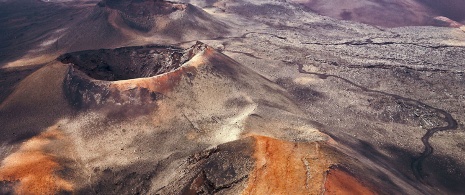
Lanzarote: The Fire Mountains
It's hard to choose unique places in a destination that is already really special. Lanzarote is the easternmost island in the Canaries and despite having a volcanic landscape that looks lunar, life makes its way through in a beautiful way. You can see it if you visit the volcanoes of the Timanfaya National Park, in Los Verdes Cave (where there is a surprise in store), or in the ‘Charco de los ciclos’ (Green Lagoon), a lagoon that is connected to the sea, and which is an amazing colour. The land of the Fire Mountains never disappoints.
-
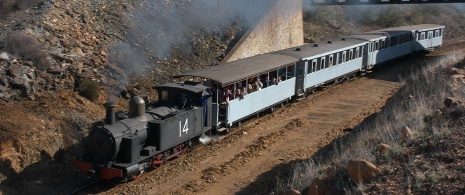
Riotinto: Mars on Earth
Did you know that this place was chosen by NASA and the European Space Agency to conduct their experiments? The reason is because the mining basin of the Tinto River (Huelva) is quite similar to Mars. This landscape is indeed mysterious: a river and reddish rocks with little vegetation. The diversity of life is surprising, though. If you want to get to know this area, the best way is to visit the Riotinto Mining Park, where you can go on a train, enter a mine, visit a Victorian house and discover more about the history of this place. Don't worry – you won't find any Martians here!
-
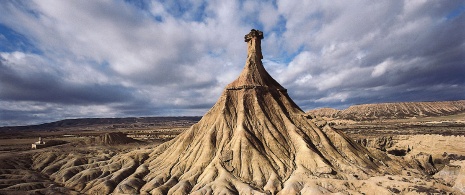
Bardenas Reales: an unexpected desert
It's unexpected because it's in Navarre, a region in northern Spain with a green and mountainous landscape. However, in the southeast of this region you can find 42,500 hectares of semi-desert with shapes, ravines and hills that look like they are straight out of a science fiction book. Thanks to its ‘rare beauty’ formed by erosion over millions of years, this Nature Reserve has been a filming location for films like ‘The World is not Enough’. Whether you like James Bond or not, you can follow one of the signposted paths on foot, by bicycle, on horseback or in a motor vehicle.
-
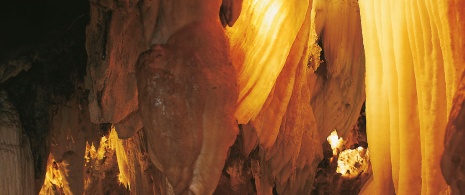
Gruta de las Maravillas
Cave of Wonders - its name says it all. This visitor-friendly cave in Aracena is over two kilometres long (1,200 metres can be visited), and full of wonders - a dazzling variety of stalactites, stalagmites and lava flows. An underground landscape where you can let your imagination run wild as you go through the Sala de la Catedral (Cathedral Hall), Cristalería de Dios (the Glassworks of God) or Baño de la Sultana (Bath of the Sultan's Wife). A guide will show you the way. Fancy coming a bit closer to the centre of the Earth?
-
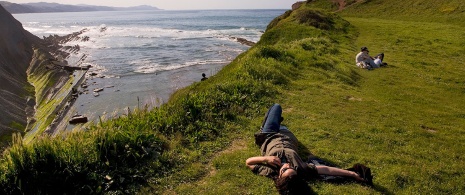
The Flysch Route: 50 million years of history
We're off to the Basque coast now, and we'll stop at Zumaia, Deba and Mutriku. The cliffs in this area are breathtaking, and especially when you find out that they are over 50 million years old and have been eroded by the sea. In order to get to them you can go trekking along the coast or sign up for a boat trip. It's not every day that you can gaze at the amazing cataclysms of the history of Earth.
-
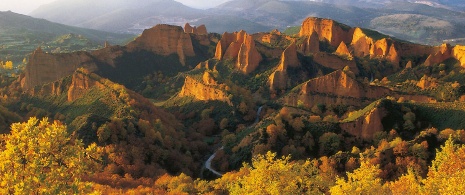
Las Médulas: a mine during the Roman empire
The Romans chose this place in León to extract gold, they created the largest open-pit mine in the entire Empire and transformed the landscape forever. Today it's a World Heritage Site and it's a real treat to go in the evening and watch the sun set over the reddish hills. It's a good idea to start your visit at the archaeological centre and, of course, stop at the Orellán viewpoint.
-
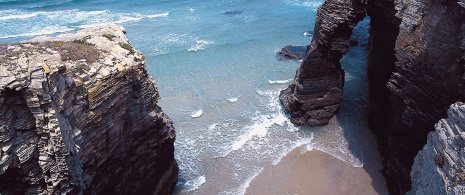
Las Catedrales beach
Walking next to the sea under the arches of a ‘stone cathedral’ – that's what's in store for you if you come to Playa de As Catedrais (the Cathedrals beach) in Ribadeo (Lugo). The fanciful shapes created by the wind and water make this beach one of the most beautiful in Spain. So, when the tide is out, the best thing is to kick off your shoes and go for a long walk along the beach.
-
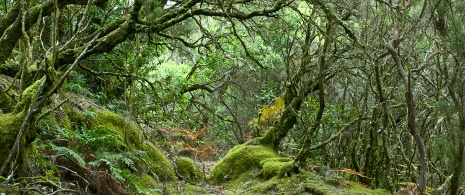
La Gomera, age-old forests
Let's go back to the Canary Islands, but this time to the island of La Gomera, where we find magical seas of clouds. In Garajonay National Park (World Heritage Site) there is a thick laurisilva (laurel forest), which is a living relic of the sub-tropical forests that could be found in the Tertiary era several million years ago. There is also another natural gem on this island that can be seen from the sea – ‘Los Órganos’ (the Organs), an ancient volcanic rock cliff that actually looks like organ pipes.
-
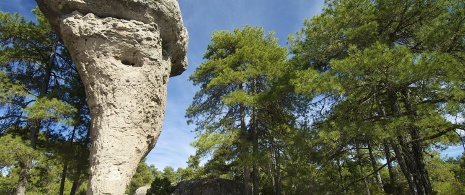
Cuenca's Enchanted City
It all started 90 million years ago, when this area was part of the Tethys Sea. When the waters subsided, the limestone was gradually eroded until the amazing shapes that we can see today were created. On a 2.5-kilometre route you can see things like an elephant fighting with a crocodile, a sea of stone, a convent, a slide, etc. All you have to do is let your imagination run wild.
-

Caminito del Rey, a footpath for the brave
This footpath in Malaga was once considered to be the most dangerous in the world. Today you can feel completely safe when you walk it, but you will have to face breathtaking views! The Desfiladero de los Gaitanes, dug out by the Guadalhorce River, is 700 metres deep. Do you dare look down? It's definitely worth it.
-
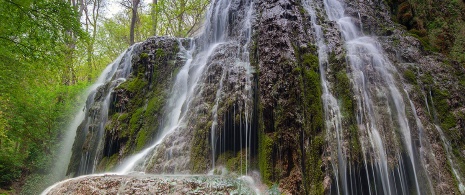
Monasterio de Piedra
Suddenly, in the south of Zaragoza, like an oasis, this wonder of nature appears before your eyes. Although its name refers to a 12th century monastery that can be visited, this place is famous for the landscape full of waterfalls and caves. Some of the most spectacular ones are Cola de Caballo (Ponytail) and Caprichosa (Capricious). Go for a walk along its viewpoints, look at your reflection in the ‘Lago del espejo’ (Mirror Lake), listen to the sound of the water or enjoy a flight display by birds of prey. You'll never forget these experiences at Monasterio de Piedra!
-
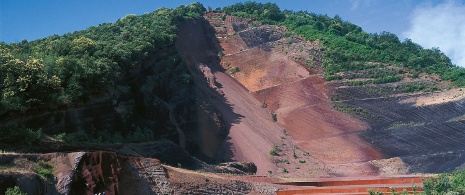
Volcanoes in Catalonia?
Yes. And not just one or two. The Natural Park of the Volcanic Zone of La Garrotxa (in Girona) finished forming 11,000 years ago, when the last eruption occurred. Today there are about 40 volcanic cones (they are inactive, don't panic) and more than 20 lava flows. You'll find more than 25 paths around the area, and despite all its hidden treasures, you can enjoy the varied and exuberant vegetation. You'll be amazed by how the 13 towns that are part of this park are integrated into the landscape. A perfect way to enjoy it is from a hot air balloon. Do you fancy it?
-
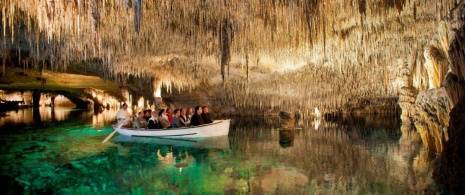
Drach and Can Marçà Caves
We're going underground again, this time to explore two caves in the Balearic Islands. The Drach Caves, in Majorca, hold one of the largest underground lakes in the world. The best thing about these caves is a classical music concert inside and a boat ride on the lake. Can Marçà Cave is in Ibiza. As well as the light and sound show inside, you shouldn't miss the amazing views of the bay.
-
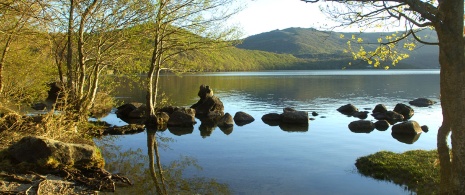
The legends of Sanabria Lake
100,000 years ago, a 20-kilometre glacier created this lake. You'll find the largest glacial lake in Europe in Zamora. A place that has captivated writers and those who have heard legends like the one about St. John's Night. You can still hear the town's church bells even though it has been under water since 1959. In the summer you can have a swim thanks to the small beaches along the lake shore. You can also go canoeing or ride a tour boat. From the mountain, the view over the lake is one of a kind.
-
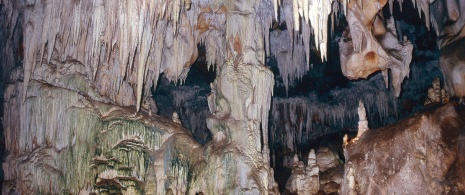
Águila Caves
If you've never actually exclaimed ‘Wow!’ out loud when you see something beautiful, you definitely will when you come here, to the Águila Caves (in Ávila), in the heart of the Sierra de Gredos mountains. This excursion below ground takes you to a landscape of columns, stalactites and stalagmites which, oddly enough, were discovered by chance on Christmas Eve of 1963. Over a kilometre of passageways have been prepared to take you through several chambers with ceilings as high as 20 metres.
-
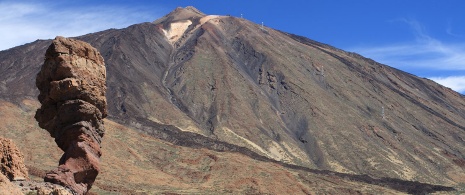
Tenerife, home to the highest peak in Spain
This is the third place on this list that we find in the Canary Islands – the Teide. A list like this wouldn't be complete without Spain’s highest peak, the Teide (said to be the third highest and largest volcanic mountain on earth) - and you can take a cable car to the top. The peak is situated in a vast National Park which is a World Heritage Site and is equally beautiful. It's a real experience to explore the area’s lunar landscape and see animals and plants that only exist in this part of the world.
-
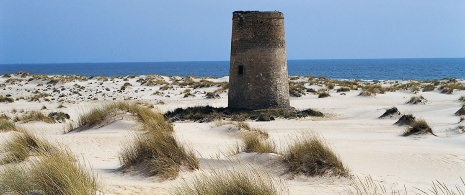
...and Atlantis
No. No, we've not gone mad. The legendary Atlantis has not just emerged from the water. But what's true is that National Geographic, for example, has suggested that the lost city that Plato talked about (‘beyond the Pillars of Hercules‘) could very well be located under the lands of Doñana National Park. But while the ‘mystery‘ is solved, we can enjoy the amazing dunes and marshes in this part of Andalusia.
Travel plans for inspiring you





















